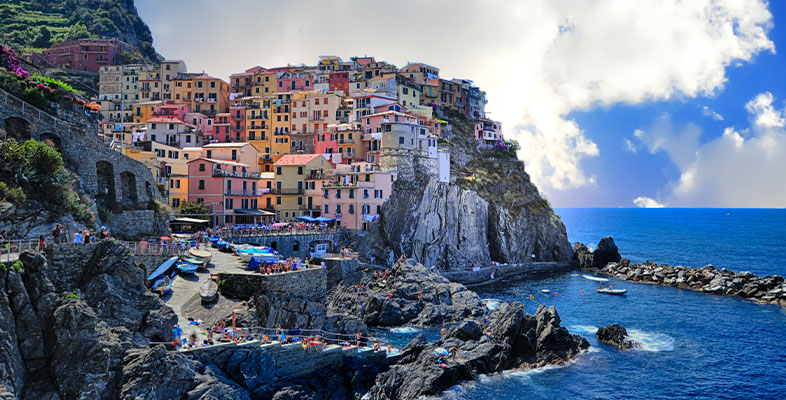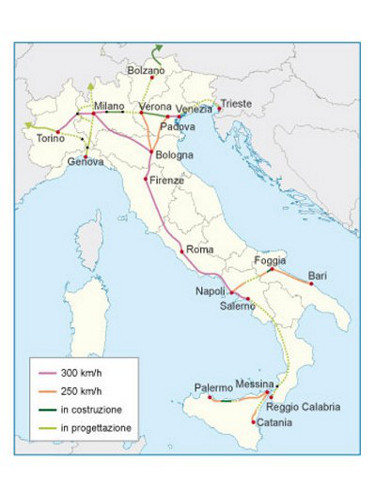1 The Italian rail network
Travelling by train can be a cheap and convenient means of getting around in Italy, although to travel from Brennero in the far north-east to Reggio Calabria at the southern tip of Italy would take at least 15 hours and involve three changes of train.
The Italian rail network, previously known as Ferrovie dello Stato (FS), is now known as Trenitalia. Still state-owned, it is heavily subsidised, which keeps ticket prices low. As in other European countries, it is now possible to buy most tickets online. In 2012, the privately owned Italo began services between 30 stations in main cities using 300 km/h high speed trains.
The Treni ad Alta Velocità (TAV), or fast through-trains, link several major cities in both the north and south. At the other end of the spectrum, many parts of the country are still heavily dependent on the treni regionali (regional trains), which are slow and stop frequently. Somewhere in between are the treni nazionali (national trains), which link major towns throughout Italy.
The rail network is very much a product of the country’s geography. Central and southern Italy are divided along most of their length by the natural barrier of the Appenines, meaning that east–west rail links are few and far between. In the Po Valley in the north of Italy, however, east–west rail links are good, with a fast train network extending from Genoa in the west to Trieste in the east.
There are still areas of the country where stations are either non-existent or far from the town they are named after (for example, in rural Tuscany or the hill towns of the south and Sicily). In some cities, a bus service links the station to the town centre. To take just one example, the popular tourist destination of Assisi has a station in the nearby town of Santa Maria degli Angeli from which travellers can reach Assisi’s historical town centre by bus. In contrast, many regional airports, such as Pisa and Rome Fiumicino, have their own train station with frequent shuttle services to the main train station.
In recent decades, there has been heavy investment in the high-speed rail network and this is set to expand further, despite ongoing protests (anti-TAV) against its expansion in the north of Italy. The map above shows the current high-speed network and its planned expansion.

